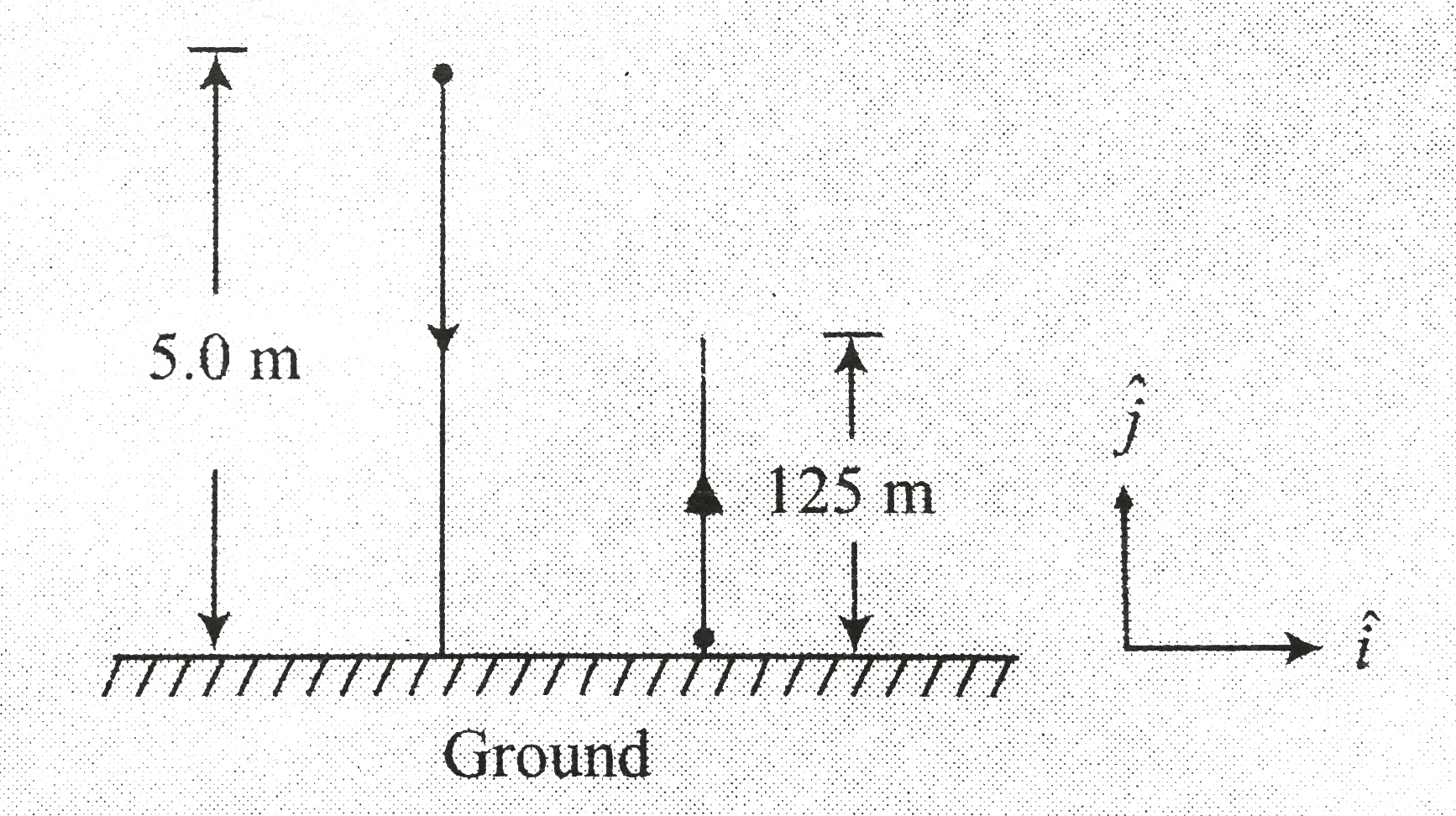A steel ball of mass m=50g falls from the height h=1.0m on the horizontal surface of a massive slab. Find the cumulative momentum that the ball imparts to the slab after numerous bounces, if every impact decreases the velocity of the ball η=1.25 times.
The correct Answer is:[m√2gh(1+η1−η)]
Step by step video, text & image solution for A steel ball of mass m=50g falls from the height h=1.0m on the horizontal surface of a massive slab. Find the cumulative momentum that the ball imparts to the slab after numerous bounces, if every impact decreases the velocity of the ball eta=1.25 times. by Physics experts to help you in doubts & scoring excellent marks in Class 11 exams.
Topper's Solved these Questions
- BOOK - PHYSICS GALAXY - ASHISH ARORACHAPTER - LINEAR MOMENTUM & ITS CONSERVATIONEXERCISE - exercise 1.33videos
LINEAR MOMENTUM & ITS CONSERVATION
- BOOK - PHYSICS GALAXY - ASHISH ARORACHAPTER - LINEAR MOMENTUM & ITS CONSERVATIONEXERCISE - Advance McQ20videos
LINEAR MOMENTUM & ITS CONSERVATION
- BOOK - PHYSICS GALAXY - ASHISH ARORACHAPTER - KINEMATICSEXERCISE - Unsolved Numerical Pro.83videos
KINEMATICS
- BOOK - PHYSICS GALAXY - ASHISH ARORACHAPTER - NEWTONS LAWS OF MOTIONEXERCISE - Unsolved Numerical Problem81videos
NEWTONS LAWS OF MOTION
Similar Questions
A steel ball of mass w=50gm falls from height h=1 m on the horizontal surface of a massive slab. Find the cumulative momentum imparted to the slab by the ball after numerous bounces, if the coefficient of restitution between the ball and the slab is e = 0.8.
View SolutionA rubber ball of mass 50g falls from a height of 100cm and rebounds to a height of 50cm Find the impulse and average force between the ball and the ground, if time of contact is 0.1s .
View Solution
Knowledge Check
- Question 1 - Select One
A ball of mass 0.20kg falls freely from a certain height and rebounds elastically with a speed of 40ms−1. The change in momentum of the ball is
A4kgms−1B8kgms−1C16kgms−1D40kgms−1 - Question 2 - Select One
A ball of mass m falls vertically to the ground from a height h1 and rebound to a height h2. The change in momentum of the ball on striking the ground is.
Amg(h1−h2)Bm(√2gh1+√gh2)Cm√2g(h1+h2)Dm√2g(h1+h2) - Question 3 - Select One
A ball falls from a height of 10m on to a horizontal plane. If the coefficient of restitution is 0.4, then the velocity with which it rebounds from the plane after second collision is
A2.24ms−1B5.6ms−1C2.8ms−1D0.9ms−1
A rubber ball of mass 50 g falls from a height of 5m and rebounds to a height of 1.25 m. Find the impulse and the average force between the ball and the ground if the time for which they are in contact was 0.1s
 View Solution
View SolutionA ball of mass 200g falls from a height of 80cm. If g=10m/s2, what momentum is transferred to the floor by the ball? Assume that the ball does not rebound.
View SolutionA steel ball of mass 0.5 kg is dropped from a height of 4 m on to a horizontal heavy steel slab. The collision is elastic and the ball rebounds to its original height.
If the ball is in contact with the slab for 0.002 s, find the average reaction force on the ball during impact.View SolutionA steel ball of mass 0.5 kg is dropped from a height of 4 m on to a horizontal heavy steel slab. The collision is elastic and the ball rebounds to its original height.
Calculate the impulse delivered to the ball during impact.View SolutionAn iron ball of mass m=50g falls from a height of (h1)=5m and rises upto h2=3.2m after colliding with the horizontal surface. If the time of contact with the surface is Δt=0.02s, find the average contact force exerted on the ball by the horizontal surface.
View Solution

